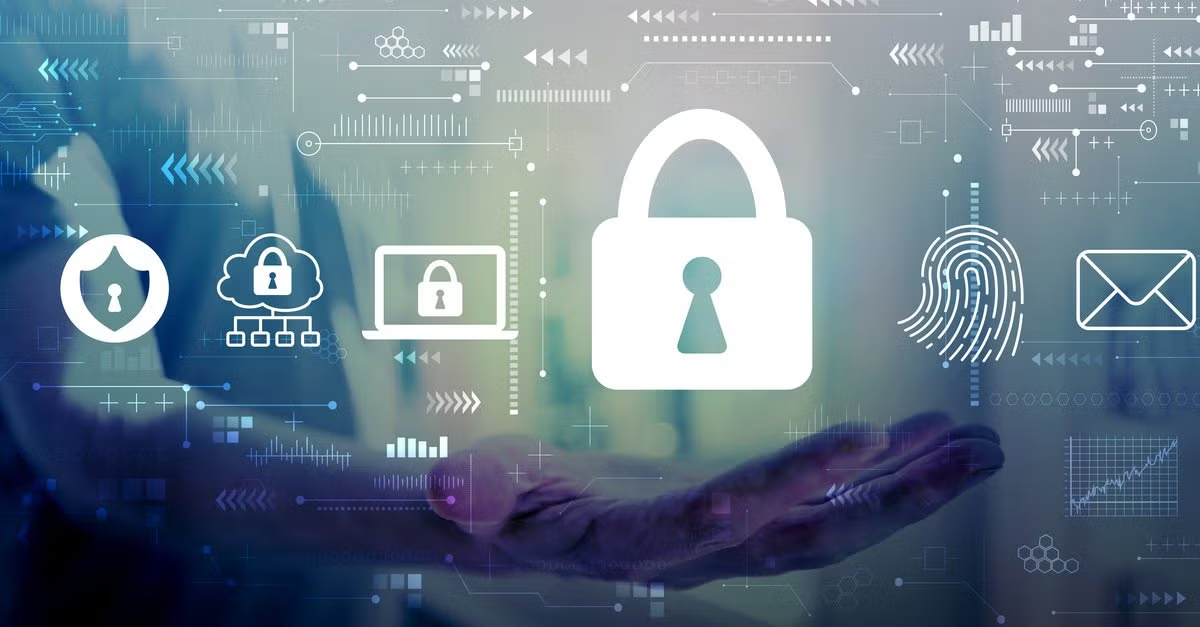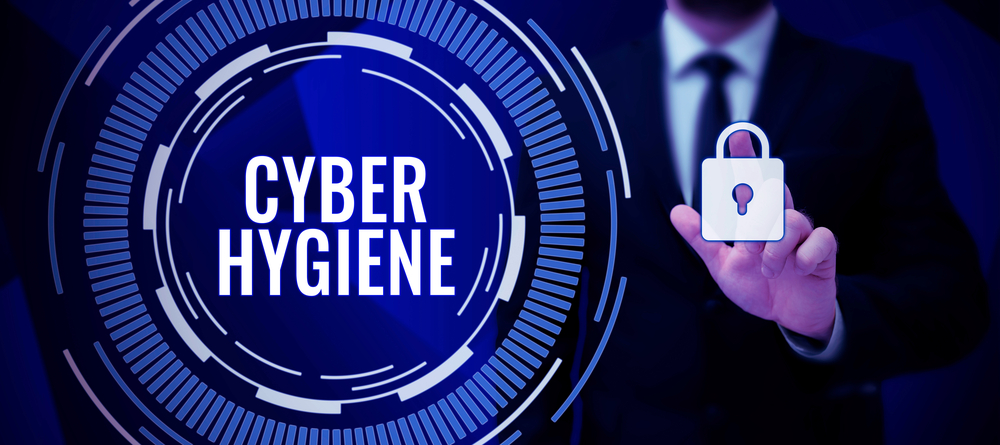
Why Cyber Hygiene Is the Foundation of Enterprise Security.
Why Cyber Hygiene Definition & Checklist: Your Foundation for Good Security
In the digital age, where cyber threats are ever-evolving, maintaining a robust cybersecurity posture is imperative. Cyber hygiene is a critical component that empowers individuals and organizations to protect sensitive data and safeguard their digital environments. By adopting good cyber hygiene practices, you can significantly reduce vulnerabilities and enhance your overall security measures, ensuring your data and infrastructure remain protected against unauthorized access and malicious activities.
Understanding Cyber Hygiene
What is Cyber Hygiene?
Cyber hygiene refers to the set of practices and steps individuals and organizations undertake to maintain system health and improve online security. Much like personal hygiene routines, good cyber hygiene practices involve a variety of consistent actions to safeguard against potential cyber incidents. Some of the key practices include:
- Consistently updating software
- Managing passwords effectively
- Using tools such as antivirus software and firewalls to prevent cyberattacks and data breaches is essential for implementing effective security controls.
It is a proactive approach to fend off cybercriminals and mitigate potential vulnerabilities.
The Importance of Good Cyber Hygiene
Good cyber hygiene is essential as it forms the cornerstone of any effective cybersecurity strategy, ensuring that proper cyber hygiene is followed. Inadequate practices can lead to security breaches, data loss, and exploitation by cybercriminals. Here are some vital steps in protecting sensitive data:
- Implementing strong passwords
- Regular software updates
- Multi-factor authentication (MFA)
By practicing cyber hygiene diligently, you can safeguard your enterprise and ensure your infrastructure remains secure and resilient against evolving cyber threats
Cyber Hygiene as the Foundation for Security
Cyber hygiene serves as the foundation for good security by establishing a baseline for protecting against unauthorized access and cyber threats, ensuring that your organization adheres to security policies. It involves an array of best practices, including regular updates to your systems and tools.
- Patch management
- Password management
- Social engineering awareness
By adhering to a comprehensive cyber hygiene checklist, organizations can fortify their defenses, enhancing network security and preventing potential breaches. Practicing cyber hygiene not only protects sensitive data but also reinforces trust and reliability with stakeholders
Key Cyber Hygiene Best Practices
Creating Strong Passwords
In an era where cyber threats are increasingly sophisticated, creating strong passwords is fundamental to safeguarding sensitive data and ensuring good cybersecurity hygiene. A strong password should combine a mix of letters, numbers, and symbols to thwart unauthorized access. Utilizing a password manager can further enhance security by managing complex passwords across platforms, reducing the risk of breaches. Teamwin Global Technologica emphasizes the need for robust password policies to protect your digital environment against potential vulnerabilities.
Regular Software Updates
Regular software updates play a crucial role in maintaining a secure IT infrastructure. These updates often include security patches that address known vulnerabilities and protect against malware and other cyberattacks. Neglecting software updates can leave systems exposed to exploitation by cybercriminals. At Teamwin Global Technologica, we prioritize ensuring your operating systems and applications are up-to-date, fortifying your defense against ever-evolving cyber threats and enhancing your overall security posture.
Recognizing Phishing Attempts
Phishing attacks are a prevalent threat in today’s digital landscape, designed to deceive individuals into divulging sensitive information. Recognizing these malicious attempts is integral to good cyber hygiene. Training employees to identify suspicious emails and avoid clicking on unverified links is essential to prevent data breaches. Teamwin Global Technologica provides comprehensive awareness programs, empowering your team to identify and mitigate potential phishing threats, thus safeguarding your enterprise’s integrity.
Cyber Hygiene Checklist for Individuals
Daily Practices for Good Cyber Security
Adopting daily practices is vital for maintaining cyber hygiene that protects against potential cyber incidents. for maintaining robust cybersecurity. Simple actions such as using multi-factor authentication (MFA), logging out of accounts when not in use, and avoiding unsecured Wi-Fi networks can significantly reduce the risk of unauthorized access and promote proper cyber hygiene. These practices, combined with a vigilant mindset, form the backbone of effective cyber hygiene. At Teamwin Global Technologica, we encourage individuals to implement these practices to enhance their personal and organizational security measures.
Monthly Security Review
A monthly security review is an important component of a proactive cybersecurity strategy. This involves assessing your security posture by reviewing access logs, ensuring backups are current, and verifying that antivirus software is functioning correctly. Such regular reviews help in identifying potential vulnerabilities and implementing necessary improvements to your security policies. Teamwin Global Technologica is committed to assisting you in conducting thorough security assessments, ensuring your digital environment remains secure and resilient against cyber threats through comprehensive cybersecurity measures.
Assessing Your Security Posture
Assessing your security posture involves a comprehensive evaluation of your current cybersecurity measures and their effectiveness. This assessment should include evaluating password strength, the efficacy of security patches, and the robustness of your firewall settings to ensure robust security controls. By understanding your vulnerabilities, you can take actionable steps to fortify your defenses. Teamwin Global Technologica remains dedicated to empowering its clients through expert assessments, ensuring your infrastructure is secure, safe, and prepared to withstand future cyber challenges.
Common Cyber Hygiene Problems
Identifying Common Cyber Threats
In the ever-evolving landscape of digital threats, identifying common cyber threats is crucial for maintaining a secure cybersecurity posture. Cybercriminals often exploit vulnerabilities through phishing attacks, malware deployment, and social engineering tactics. Recognizing these threats allows individuals and organizations to implement proactive security measures, such as employing strong passwords and keeping antivirus software updated. At Teamwin Global Technologica, we are committed to empowering our clients to anticipate and mitigate these threats, ensuring their digital environments remain secure and resilient.
Impacts of Poor Cyber Hygiene
Poor cyber hygiene can lead to significant ramifications, including data breaches, unauthorized access, and data loss, which can be mitigated through proper cyber hygiene. When cybersecurity hygiene is neglected, organizations expose themselves to exploitation by cybercriminals and increased vulnerability to ransomware attacks. These breaches compromise sensitive data and can severely damage an organization’s reputation. Teamwin Global Technologica emphasizes the importance of implementing good cyber hygiene practices to safeguard your enterprise, fortify your defenses, and ensure the integrity of your infrastructure.
Remedies for Cyber Hygiene Issues
Addressing cyber hygiene issues requires a comprehensive strategy encompassing regular software updates, patch management, and robust password management. Implementing a cyber hygiene checklist can aid in identifying vulnerabilities and ensuring security patches are applied promptly. Multi-factor authentication (MFA) is another effective measure to protect sensitive data from unauthorized access. At Teamwin Global Technologica, we are dedicated to providing solutions that bolster your security posture, empowering you to navigate digital challenges confidently and securely.
Protecting Sensitive Data
Strategies to Protect Sensitive Data
Protecting sensitive data is paramount in today’s digital age, where cyber threats are prevalent and cybersecurity awareness is crucial. Strategies such as encrypting data, employing firewalls, and using a password manager for strong password policies are essential in safeguarding your information. Regularly updating your operating systems and security measures further reduces the risk of breaches. Teamwin Global Technologica is committed to implementing best practices that ensure your data remains protected, offering peace of mind and securing your business’s future.
Role of Good Cyber Hygiene in Data Protection
Good cyber hygiene plays a pivotal role in data protection by establishing a robust defense against potential cyberattacks. Practices such as regular security reviews and vigilance against phishing attempts contribute significantly to safeguarding sensitive data and enhancing cybersecurity awareness. By maintaining an updated cybersecurity hygiene routine, individuals and organizations can effectively mitigate risks and prevent unauthorized access. Teamwin Global Technologica assures that your infrastructure remains secure, providing a trustworthy environment where your data is consistently protected.
Consequences of Data Breaches
Data breaches can have devastating consequences, leading to financial losses, reputational damage, and loss of customer trust. When sensitive data is compromised, it can result in unauthorized access and exploitation by cybercriminals. These incidents highlight the critical need for robust cybersecurity measures and good cyber hygiene practices. Teamwin Global Technologica is dedicated to helping you fortify your defenses, ensuring your organization remains resilient against breaches and maintains the trust of your stakeholders through regular updates and penetration testing.
5 Surprising Facts About Why Cyber Hygiene is the Foundation of Enterprise Security
- Many data breaches result from poor password management, highlighting the importance of regular password updates and use of password managers as part of cyber hygiene.
- Over 70% of cyber attacks exploit known vulnerabilities, which can be mitigated through regular software updates and patch management in a robust cyber hygiene strategy.
- Employee training on cyber hygiene can reduce the risk of phishing attacks by up to 70%, emphasizing the need for ongoing education and awareness programs.
- Implementing basic cyber hygiene practices can prevent up to 80% of cyber incidents, proving that simple measures can significantly enhance enterprise security.
- Companies with a strong cyber hygiene culture are 60% less likely to suffer significant data breaches, demonstrating the critical role of organizational commitment to security best practices.
What is cyber hygiene and why is it crucial for enterprises?
Cyber hygiene refers to the practices and behaviors that organizations implement to maintain their cybersecurity posture. It is crucial for enterprises because it helps protect sensitive data, mitigate cyber threats, and ensure the security and integrity of systems against potential breaches.
How does cyber hygiene help in managing security risks?
Cyber hygiene helps in managing security risks by promoting proactive measures such as regular software updates, strong password management, and the use of security software. These practices ensure that vulnerabilities are addressed before they can be exploited by cybercriminals.
What are the best practices for maintaining good cyber hygiene?
Best practices for maintaining good cyber hygiene include implementing strong password management, installing the latest security patches, and regularly training employees on recognizing phishing attempts. These measures collectively strengthen the organization’s overall security posture.
How does a cyber hygiene checklist improve security?
A cyber hygiene checklist serves as a practical guide for organizations to follow essential hygiene measures. By regularly checking off items on the checklist, businesses can ensure they are not overlooking critical practices that could expose them to security issues.
Why is strong password management a part of good cyber hygiene?
Strong password management is part of good cyber hygiene because it reduces the risk of unauthorized access to sensitive data. Implementing practices like using complex passwords and changing them regularly can significantly enhance an organization’s security posture.
What hygiene measures can mitigate the risk of malware?
Hygiene measures to mitigate the risk of malware include installing and updating security software, regularly backing up data, and educating employees about safe browsing habits. These practices minimize the chances of malware infecting systems and compromising sensitive data.
How do software updates relate to cyber hygiene?
Software updates are a critical component of cyber hygiene as they often contain the latest security patches that protect against vulnerabilities. Regularly updating software helps ensure that systems are safeguarded against known security issues and cyber threats.
What are some common cyber hygiene problems faced by organizations?
Common cyber hygiene problems faced by organizations include neglecting to update software, weak password policies, and insufficient employee training on cybersecurity threats. Addressing these issues is essential for maintaining a strong security posture and protecting sensitive data.
How can cybersecurity practices be improved through cyber hygiene?
Cybersecurity practices can be improved through cyber hygiene by establishing a culture of security awareness among employees, implementing consistent hygiene measures, and regularly reviewing and updating security standards. This holistic approach strengthens the overall cybersecurity framework of the organization.










